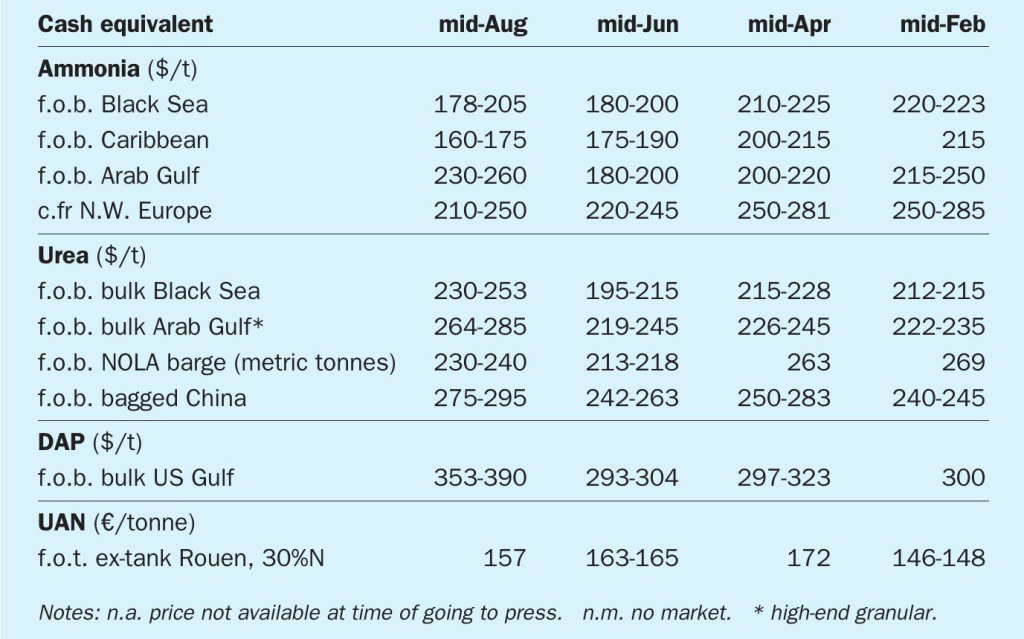Nitrogen+Syngas 367 Sept-Oct 2020

30 September 2020
Price trends
Price trends
MARKET INSIGHT
Alistair Wallace, Head of Fertilizer Research, Argus Media, assesses price trends and the market outlook for nitrogen.
NITROGEN
Ammonia production has been reduced in Trinidad, Egypt, Indonesia and the Middle East over the past two months, with much of this capacity expected to stay offline in August and into September. This series of production cuts has balanced out the supply length that has dominated the market this year, pulling prices to lows not seen since mid-2016.
Tighter supply is being reported east of Suez until September. F.o.b. prices in the Middle East have gained $7-8/t over the course of the past month, while southeast Asian f.o.b. prices firmed by $14/t. But the options for buyers in east Asia from the Americas has kept prices not trending in any particular direction in delivered markets, and competition for September cargoes means that lower c.fr offers are emerging from Chinese buyers. Indian demand is steady and firm downstream prices will keep imports at 200,000250,000 tonnes/month in the near term.
West of Suez, ammonia demand for August will remain depressed, reflecting the off-season and reduced industrial consumption. While the situation is starting to improve in Europe, import demand is unlikely to recover until at least September.
Urea prices bottomed out in May and have continued to rise since then, driven by record demand from India. India has tendered to buy urea four times in the past two months due to a rise of 3.7 million tonnes in sales in the April-July period, an increase of 48%. The pull from India has singlehandedly lifted the urea market. Prices for granular urea from Egypt have risen from a low of $205/t f.o.b. in May to $280/t f.o.b. in early August. Middle East granular urea has moved up from about $210/t f.o.b. to $270/t f.o.b. in the same period. Chinese urea prices, which normally ease in Q3 at the end of the summer season, have instead increased to $270/t f.o.b.
Other markets have also seen prices moving up. Brazil is the main focus in the western hemisphere, and buyers have seen increases of $60-70/t since early June. The onset of the peak shipment period and competition for tonnage from India mean that buyers have little option but to pay up. Some buying has also taken place from Egypt and Algeria to cover short positions taken for July-September shipment to Europe, entailing significant losses for the traders concerned.
Indian demand will continue to support the urea market through September, but prices have risen rapidly and a correction is possible if Indian buying slackens in Q4. Buyers in other markets are also showing reluctance to accept continually rising prices – recent business has mainly involved traders taking long positions rather than making c.fr sales.

END OF MONTH SPOT PRICES
natural gas

ammonia

urea

diammonium phosphate







